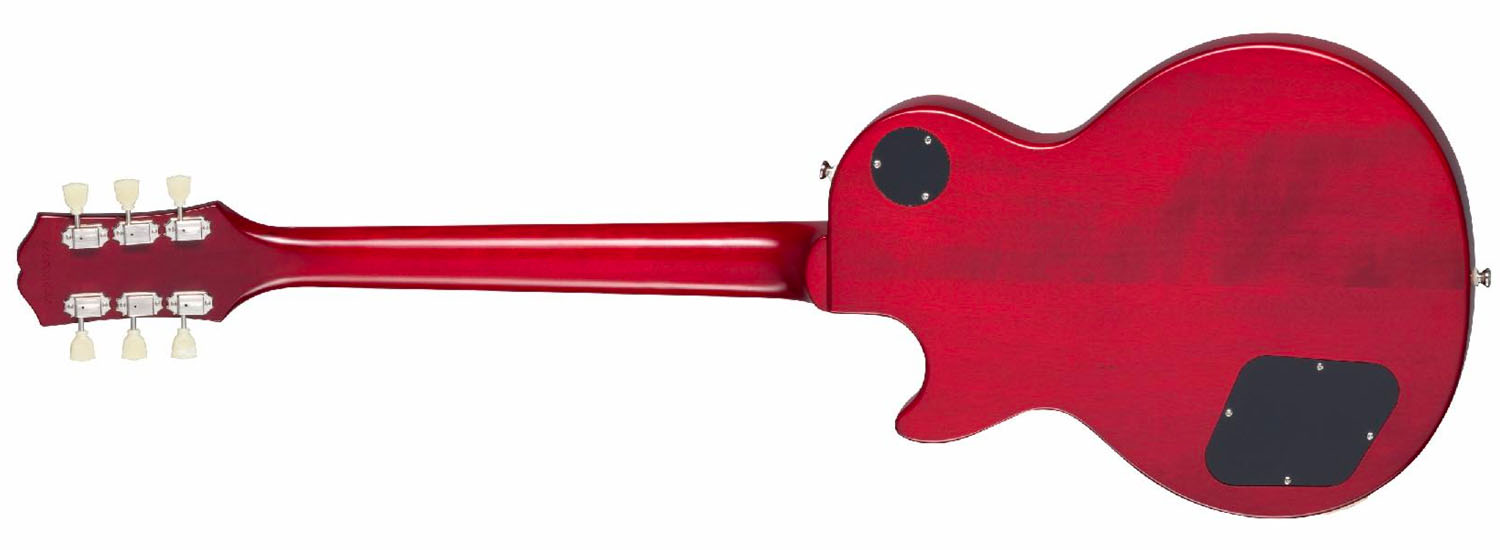Epiphone releases stunning replica of Joe Bonamassa’s ’59 Gibson Les Paul Standard ‘Lazarus’
“We wanted to make a model that was accessible to everyone at a price point that you could buy it and go out and gig with it,“ says JoBo

Epiphone and Joe Bonamassa have collaborated on a replica of one of the most-famous electric guitars in the blues superstar’s collection.
The Joe Bonamassa ‘Lazarus’ 1959 Les Paul Standard is latest signature guitar to be developed by Epiphone and JoBo, and is based on and named after a 1959 Les Paul Standard that the bluesman and inveterate collector was introduced to one night in December 2019.
Bonamassa was eating meatballs at an Italian joint in Los Angeles, holding court with a number of fellow guitar nerds, artists and dealers, when he was presented with a guitar case containing an “almost Candy Apple Red husk of a guitar”.
It’s gig-ready, and it’s a great tool to have whether you’re playing out live, in the studio, or just having fun at home annoying your neighbours
Joe Bonamassa
It was a Les Paul Standard. That much was for sure, but had been refinished in red. The plot thickened. The factory large frets was a tell that it wasn’t a ’58.
“There was 120 people in this room all kind of chiming in, and I was like, ‘I think, what I am seeing is indelibly linked to a ’58/’59 or possibly an early 1960 Les Paul,’” says Bonamassa.
Bonamassa took another look, checked the pots, bought it, and then sent it to Kim LaFleur at Historic Makeovers to restore it and see what’s what. When they saw the centre seam, Bonamassa knew he had struck gold.
Since being fully restored – and named Lazarus after the miracle in John (11:1–45) – it has become a mainstay of Bonamassa’s show, and the Epiphone version looks like another prime example of the Gibson brand going large with the spec and detail to challenge the US Les Pauls.
Want all the hottest music and gear news, reviews, deals, features and more, direct to your inbox? Sign up here.
Lazarus is the first Epiphone Les Paul to have a one-piece mahogany neck, which is glued to the body with a long-tenon. It has a maple cap topped with AAAA flame maple veneer, finished in Aged Gloss, with a visible centre-seam to enhance those ‘Burst vibes. The feel of the neck is a throwback, too, with Epiphone using a ’59 rounded C profile, and this is topped with a 12” radius Indian laurel fretboard.

The Epiphone Lazarus comes fitted with a pair of Gibson USA BurstBuckers with the typical dual-volume, dual-tone control setup, and a Switchcraft three-way pickup selector mounted on the shoulder. Epiphone has used gold ‘Top Hat’ control knobs with dial pointers here and an amber-tip on the selector switch.
Lazarus has a Switchcraft output jack. Under the hood you will find a 1950s-style wiring loom, with CTS pots, and Mallory capacitors – quality components that will be critical in getting the best out of those PAF-alike pickups and making the ‘Burst experience as authentic as possible. Run it through and overdriven tube amp and roll back the volume to clean it up.


Elsewhere, we’ve got a nickel-plated LockTone tune-o-matic bridge with LockDown stop bar, Epiphone Deluxe Tulip Keystone-style tuners, a Graph Tech nut, cream pickguard, and the whole shebang ships in a vintage-style brown hardcase, with, “BONAMASSA Nerdville, CA” graphic and a certificate of authenticity. And best of all, it ships for under a grand, with the Joe Bonamassa ‘Lazarus’ 1959 Les Paul Standard priced £799/$899.
“We wanted to make a model that was accessible to everyone at a price point that you could buy it and go out and gig with it; it looks and feels like the original guitar,” said Bonamassa. “It’s gig-ready, and it’s a great tool to have whether you’re playing out live, in the studio, or just having fun at home annoying your neighbours.”
For more information, head over to Epiphone. Joe Bonamassa, meanwhile, has been busy, too, having recently produced Joanne Shaw Taylor’s The Blues Album with Josh Smith, and with his new album, Time Clocks, scheduled for release on 29 October.
You can read more about Bonamassa’s approach to producing artists here. Time Clocks is available to preorder via KTBA records.
Jonathan Horsley has been writing about guitars and guitar culture since 2005, playing them since 1990, and regularly contributes to MusicRadar, Total Guitar and Guitar World. He uses Jazz III nylon picks, 10s during the week, 9s at the weekend, and shamefully still struggles with rhythm figure one of Van Halen’s Panama.
